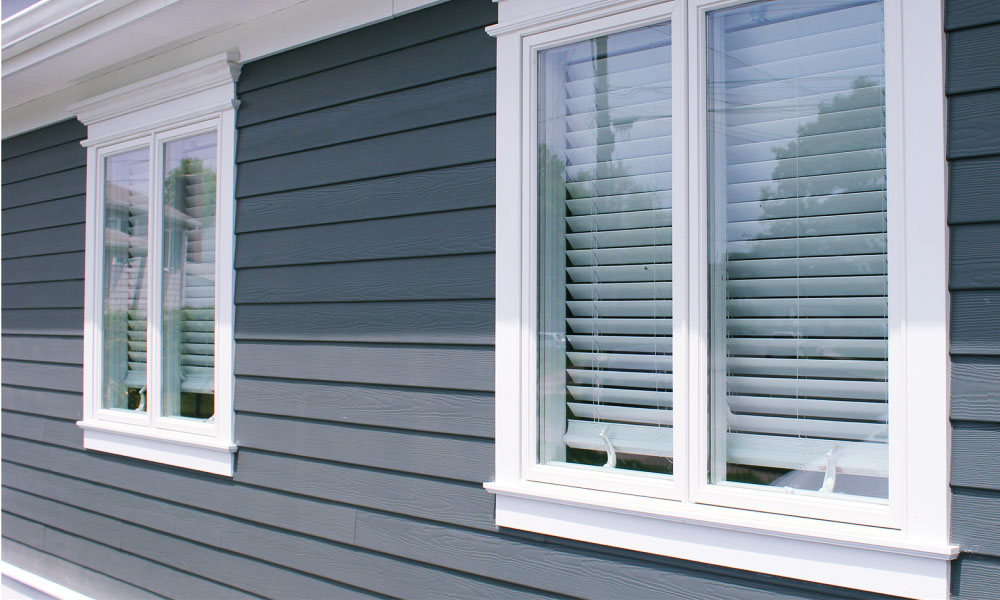How to prep your deck, patio, siding and other outdoor surfaces for winter.
By Diane Franklin
The days are getting shorter, the air is getting crisper—no doubt that winter is on the way. Most likely you’ll be spending more time indoors, but that doesn’t mean you should forget about the outside surfaces that need protection against the winter elements. Before the weather gets too frosty, here are some things you should do to ensure your painted or stained surfaces survive the harsh winter months to come.
Keep Winter at Bay
For those who live in the nation’s colder climes, the monthly heating bill becomes a major motivator for winterizing a home. If you live in an area where winter temperatures dip below freezing, you are probably among those homeowners who want to ensure you’re keeping out the cold and wind that could cause your energy costs to go—figuratively speaking—through the roof.
Check windows and doors for gaps or damage. Remove damage, replace framing, replace weather-stripping and use appropriate caulk and sealant products to seal any gaps. The best choice is a durable silicone product specially formulated for weatherproofing windows and doors.
Freshen Your Siding
Many homeowners wait until spring to freshen up their siding, but there is some merit to doing this task before winter sets in. For one thing, you will be able to inspect your siding as you clean for any potential problems that are best handled before the harsh conditions of winter are able to cause additional damage.
If your siding is grimy and dirty, clean it with a commercial house-wash product. If you opt to use a pressure washer to do the cleaning, make sure you know how to use it so as not to damage your siding. If unsure of your abilities, hire a contractor to do the work for you.
Inspect your siding for weak spots or failing paint. Remove failing paint by scraping or other means. Patch any damaged areas, then prime and repaint—preferably with the same paint that was used to paint the entire home. If you don’t have enough of that paint on hand, or it is noticeably different in appearance from the rest of the paint job due to weathering, take some of the peeled-off chips to your paint store for a computerized color match. When spot painting, paint an entire board of siding for a uniform appearance.
If the paint is cracked, peeling or alligatoring in numerous locations, your best recourse may be to scrap off the failing paint, patch any damaged areas as necessary and do a full repaint job. Make sure you prime bare spots before painting the entire surface with your top coat. If this job is too big for you, contact your local paint store for contractor recommendations.
Clean the Gutters
Another important tip for keeping your paint job intact during the winter is to clean your gutters. Gutters that are clogged with leaves and debris are likely to fill up with water from rain and melted snow, thus causing significant damage to the surrounding siding as well as your home’s foundation. The gutters may also start to sag or even pull away from the house, causing even more damage that will cost you a pretty penny to repair.
Weatherize Your Deck
Your deck is another exterior surface that needs attention before winter sets in. Start by removing your deck furniture, planters, outdoor grill and other items from the deck surface. Store them inside your basement or garage, or if keeping them outside, make sure they are covered with a tarp for protection.
Sweep dirt, leaves and other debris from the deck. Clean the deck thoroughly with deck cleaner and, if the deck looks weathered and faded, follow up with a deck brightener.
Chances are you’ll want to wait until spring to re-stain your deck; but if the stain on your deck is already weathering away, your best bet may be to stain it now so that you can protect it against moisture from standing snow.
If you do opt to stain your deck before winter sets in, don’t put off the task for too long. Most stain manufacturers recommend that you apply stain when the air and wood surface temperature is above 50 degrees (and below 90). Also, avoid staining in direct sunlight or if rain is expected within the next two days.
Protect Your Patio
You may think your patio will hold up to winter just fine because it’s a durable masonry surface, but you still may want to take extra steps to protect it against the worst that cold weather has to offer.
Begin as you did for weathering your deck—by protecting furniture, planters, outdoor grill, etc., and also sweeping up dirt, leaves and other debris. Protect decorative masonry patios by using a masonry sealer to prevent ice and salt from damaging it. The same product can be used to protect other concrete surfaces around your home such as driveways and walkways.
Putting all that work into protecting your exterior surfaces will make the winter a less harrowing time for your home. When spring comes around again, you can enjoy the benefits of your proactive approach to keeping your home looking the best it possibly can.

 Interior Paints
Interior Paints Exterior Paints
Exterior Paints Primers
Primers Stains & Clears
Stains & Clears
 Paint Brushes
Paint Brushes Paint Roller
Paint Roller Paint Trays & Liners
Paint Trays & Liners
